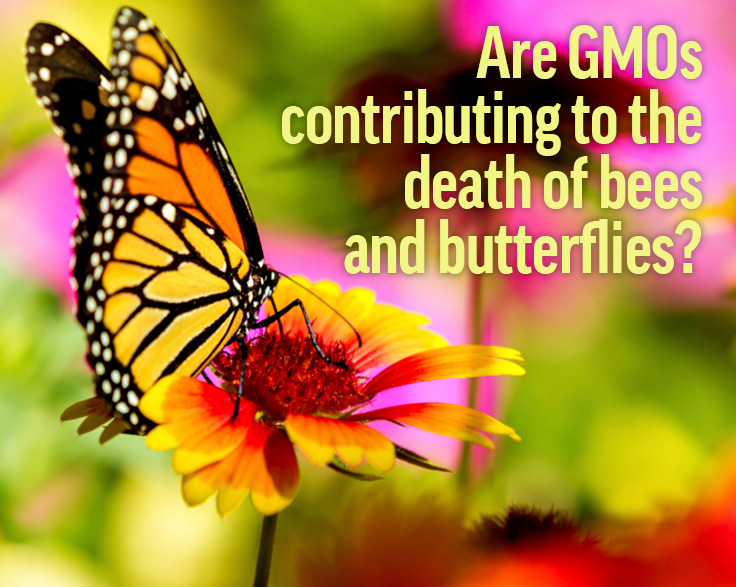Week #9b - Are GMOs contributing to the death of butterflies?
Top Consumer Questions about GMOs
View All as One Page
Last week, we addressed the claim that GMOs are contributing to the death of bees; this week we’ll discuss the second half of the question about butterflies.
There are a variety of factors impacting monarch butterfly populations, such as deforestation, parasitism, and ebbing populations of their host milkweed plants.
There are claims that GMOs and herbicides (more specifically an herbicide called glyphosate) are contributing to the decline in milkweed – a primary food source for monarch larvae (caterpillars)— and that the butterflies have been harmed by eating pollen from GM Bt corn. GMO Answers experts address both of these claims.
Andrew Kniss, associate professor of weed ecology and management at the University of Wyoming, explains why the cause for the milkweed decline is a complex issue, concluding that while herbicides may have played a role in the decline of species like milkweed, “the research does suggest that there are more important factors than herbicides responsible for the decline of native plant species near crop fields, including milkweeds.” This study he points to was conducted by USDA-ARS and Penn State scientists.
What can be done? Shifting land management practices is one important factor affecting milkweed and other nectar plants that sustain monarchs. Researchers, conservation groups, government agencies and the agricultural community are identifying ways to reestablish functional habitat on the agricultural landscape while continuing to recognize the need for productive agricultural systems. Farmers have an important role to play in the conservation of monarch butterflies and can support a monarch recovery by helping to replenish milkweeds in rural areas. Similarly, everyone can support a monarch recovery by helping to establish butterfly gardens in urban and suburban areas. There are hundreds of these gardens that have been planted through efforts by groups such as Monarch Watch and the Monarch Joint Venture.
With regard to pollen, we reached out to Dominic Reisig, an extension specialist and assistant professor of entomology at North Carolina State University, to further discuss the declining butterfly population. In this post he explains that “the butterflies need to eat the Bt in order to die. Only pest species, not non-pest species [such as monarch butterflies], eat GMO plants. Therefore, the non-target pest species are not exposed to the Bt and do not die.” He concludes, “GMOs are not contributing to the death of non-pest species of butterflies.”
The U.S. Department of Agriculture, has a website dedicated to its own research investigation into the claim that monarch butterflies might be harmed by eating pollen from Bt corn and found that “there is no significant risk to monarch butterflies from environmental exposure to Bt corn.” Additionally, a collaborative research effort by scientists in several states and Canada produced this report which found “no acute toxic effects at any pollen density that would be encountered in the field.”
It is important to note that before a genetically modified crop can be grown commercially, companies developing GM plants must demonstrate that the new plants are not harmful to “non-target” insects, such as bees and butterflies. This is part of the rigorous health and safety testing that GMOs must undergo before coming to market, which includes a mandatory review by the Environmental Protection Agency of GM plants that are insect resistant or herbicide tolerant to assess their environmental impact. This post by Steve Savage, discuss the extensive regulatory review process required for GMOs.
If you are interested in learning more, we encourage you to read this article by Andrew Kniss
- Are herbicides responsible for the decline in Monarch butterflies?
- Written by Andrew Kniss: http://gmoanswers.com/studies/are-herbicides-responsible-decline-monarch-butterflies




